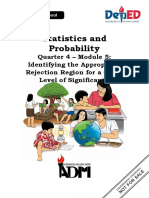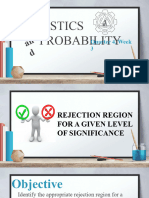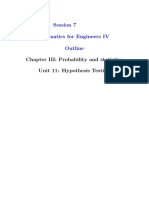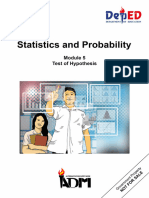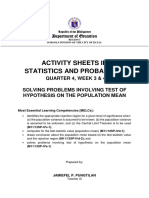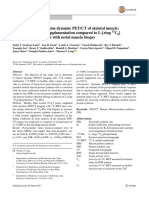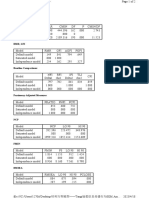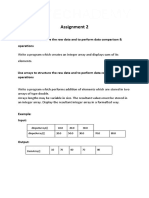0% found this document useful (0 votes)
13 views32 pagesLesson (1 5)
This lesson focuses on identifying the appropriate rejection region for hypothesis testing, including defining critical values and levels of significance. It provides examples of hypothesis tests with known and unknown population variances, detailing how to determine critical values and rejection regions using z-scores and t-scores. Activities are included to practice shading areas on normal curves and answering questions related to specific statistical problems.
Uploaded by
gozumgodwinraelCopyright
© © All Rights Reserved
We take content rights seriously. If you suspect this is your content, claim it here.
Available Formats
Download as PDF, TXT or read online on Scribd
0% found this document useful (0 votes)
13 views32 pagesLesson (1 5)
This lesson focuses on identifying the appropriate rejection region for hypothesis testing, including defining critical values and levels of significance. It provides examples of hypothesis tests with known and unknown population variances, detailing how to determine critical values and rejection regions using z-scores and t-scores. Activities are included to practice shading areas on normal curves and answering questions related to specific statistical problems.
Uploaded by
gozumgodwinraelCopyright
© © All Rights Reserved
We take content rights seriously. If you suspect this is your content, claim it here.
Available Formats
Download as PDF, TXT or read online on Scribd
/ 32



